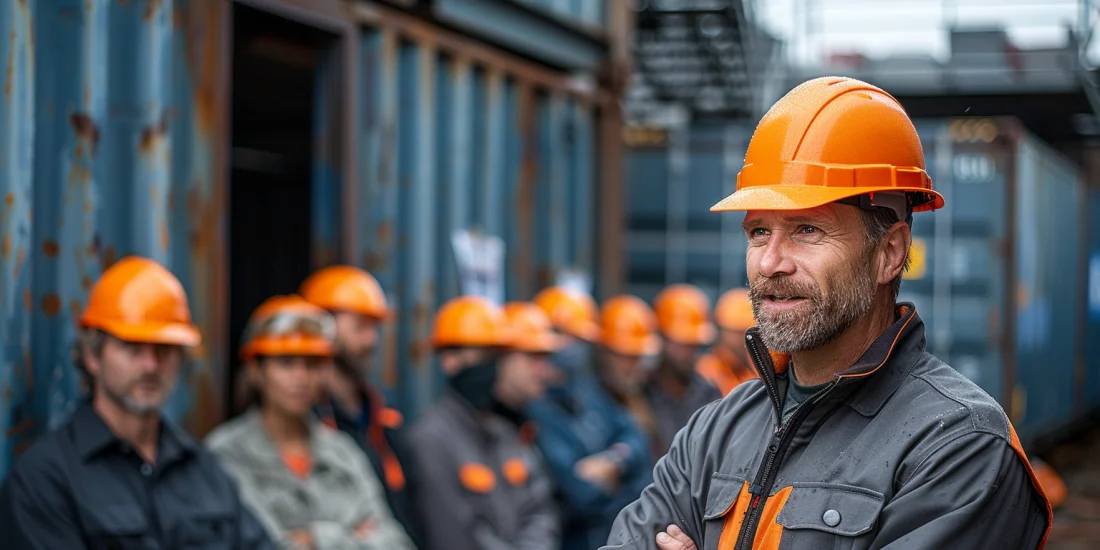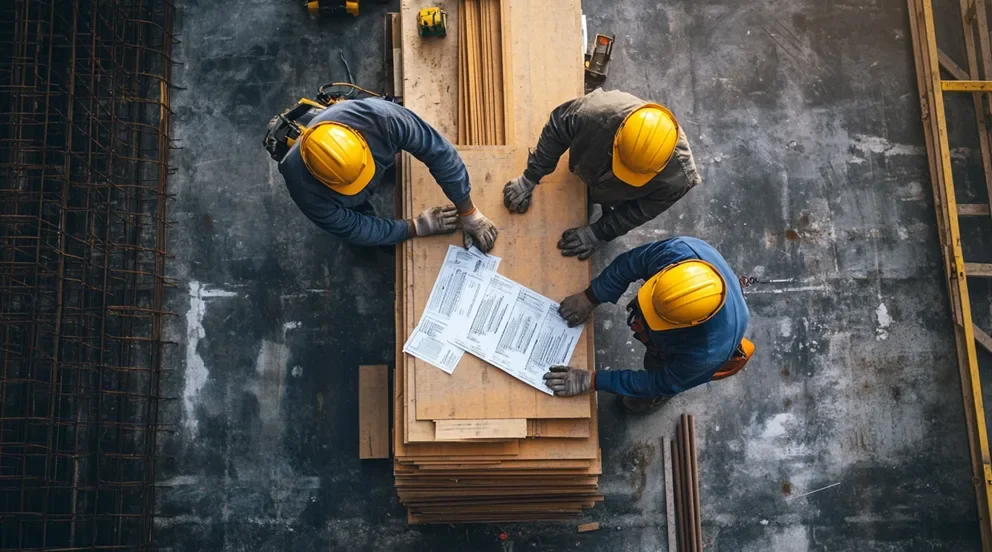When it comes to construction management, there are certain best practices to keep in mind that can help ensure a successful project. These practices involve clear communication, effective planning, and strong leadership. Let’s explore these best practices in more detail.
First and foremost, clear communication is key in construction management. This means having open and frequent communication with all team members, including contractors, subcontractors, and designers. Regular meetings and updates can help keep everyone on the same page and address any potential issues or concerns in a timely manner. Additionally, having a communication plan in place from the beginning can set expectations and guidelines for how communication will be handled throughout the project.
Effective planning is another crucial aspect of construction management. This involves developing a detailed project plan that outlines all tasks, timelines, and resources needed. Having a well-thought-out plan can help prevent delays, avoid potential conflicts, and keep the project on track. It’s also important to regularly review and update the plan as needed to account for any changes or unforeseen circumstances.
Strong leadership is also essential in construction management. A good leader is able to motivate and coordinate the team, delegate tasks, and make quick decisions when needed. They also possess excellent problem-solving skills and are able to handle any conflicts or setbacks that may arise. A strong leader is also able to effectively communicate with all team members and keep them focused and motivated towards the common goal of completing the project successfully.
In addition to these best practices, it’s also important to prioritize safety on the construction site and have a contingency plan in case of any emergencies or unexpected challenges. Regularly monitoring progress and tracking costs can also help ensure the project stays within budget and on schedule.
In conclusion, by implementing these best practices in construction management, project managers can improve communication, planning, and leadership to increase the likelihood of success. Clear communication, effective planning, and strong leadership are the pillars of a well-managed construction project and can ultimately lead to a satisfied client and a successful outcome.
The Importance of Clear Communication in Construction Management
Clear communication is a crucial aspect of successful construction management. It involves open and effective communication between all team members, including contractors, subcontractors, and designers. Without clear communication, a construction project could face delays, conflicts, and potential failures.
One key reason for the importance of clear communication in construction management is to ensure that everyone is on the same page. Regular meetings and updates can help keep everyone informed of project progress, changes, and potential issues. This helps to avoid misunderstandings and ensures that everyone is working towards the same goal.
Effective communication in construction management also involves having a communication plan in place. This outlines how communication will be handled between team members, including how often and through what channels. Having a clear plan in place from the beginning can prevent miscommunication and set expectations for the team.
Additionally, clear communication is essential for addressing and resolving any challenges that may arise during the project. By having open and frequent communication, potential issues can be identified and resolved in a timely manner. This can ultimately save time and money for the project.
In construction management, clear communication is also important for building and maintaining strong relationships between team members. A positive and collaborative working environment can lead to increased productivity and better overall project outcomes.
Effective Planning Strategies for a Successful Construction Project
Effective planning is crucial for the success of any construction project. It involves developing a detailed project plan that outlines all tasks, timelines, and resources needed to complete the project. Without proper planning, a construction project could face delays, cost overruns, and potential failures. Let’s explore some effective planning strategies that can help ensure a successful construction project.
Firstly, it’s important to involve all stakeholders in the planning process. This includes the client, contractors, subcontractors, and designers. By involving everyone from the beginning, potential issues and conflicts can be addressed and resolved in a timely manner. This also helps to ensure that everyone’s expectations and needs are considered in the project plan.
Having a clear understanding of the project scope is also essential for effective planning. This includes understanding the project goals, timeline, budget, and any specific requirements or challenges. With a clear understanding of the project scope, a detailed plan can be developed that takes these factors into account.
Another important strategy is to break down the project into smaller, manageable tasks. This helps to prevent the project from becoming overwhelming and allows for better tracking of progress and costs. Each task should have a clear deadline and assigned responsibilities to ensure accountability.
Regularly reviewing and updating the project plan is also crucial for effective planning. This allows for any changes or unexpected challenges to be addressed and incorporated into the plan. It also ensures that the project stays on track and within budget.
In addition, having a contingency plan in place is important for handling any unforeseen circumstances that may arise during the project. This helps to minimize the impact of unexpected challenges and keep the project moving forward.
The Role of Strong Leadership in Construction Management
Strong leadership is an essential aspect of construction management. It involves being able to motivate and coordinate the team, make quick decisions, and handle conflicts or setbacks that may arise during the project. Let’s delve into the role of strong leadership in the success of a construction project.
Firstly, a good leader is able to effectively communicate with all team members. This includes clearly conveying expectations, discussing any issues or concerns, and providing regular updates. By maintaining open lines of communication, a leader can keep the team aligned and focused towards completing the project successfully.
In addition, strong leadership involves effective collaboration and delegation of tasks. A leader is able to identify each team member’s strengths and delegate tasks accordingly. This helps to ensure that the project tasks are evenly distributed and completed with the highest level of expertise.
Another crucial role of a strong leader in construction management is to make quick and informed decisions. Construction projects often face unexpected challenges and a good leader is able to assess the situation and make decisions that keep the project on track. This also helps to prevent delays and additional costs.
A strong leader is also able to handle conflicts and setbacks that may arise during the project. By addressing and resolving these issues in a timely and professional manner, a leader can prevent them from escalating and impacting the project’s progress.
Prioritizing Safety: A Best Practice in Construction Management
The safety of workers and the general public should always be a top priority in construction management. This best practice involves implementing safety measures and protocols to minimize the risk of accidents and injuries on the construction site. Let’s explore why prioritizing safety is crucial in construction management.
First and foremost, prioritizing safety protects the well-being of all workers on the construction site. Construction work involves many potential hazards, such as working at heights, using heavy machinery, and handling hazardous materials. By implementing safety measures and providing proper training, the risk of accidents and injuries can be greatly reduced.
In addition, prioritizing safety also helps to prevent costly delays in the project. When accidents or injuries occur on the construction site, work needs to be stopped and investigations may need to be conducted. This can lead to project delays and increased costs. By prioritizing safety, these potential delays can be avoided.
Moreover, a safe working environment can also lead to increased productivity and motivation among workers. When workers feel safe and protected, they are more likely to be focused and efficient in their work. This can ultimately lead to a smoother and more successful project.
Prioritizing safety also helps to maintain a good reputation for the construction company. In the event of accidents or injuries, the company’s reputation may be tarnished, leading to difficulties in obtaining future projects. By prioritizing safety, the construction company can show their commitment to their workers’ safety and maintain a positive reputation.
Monitoring Progress and Tracking Costs: Key Aspects of Construction Management Best Practices
Monitoring progress and tracking costs are essential aspects of construction management best practices. By regularly monitoring progress and tracking costs, project managers can ensure that the project stays on track, within budget, and can make necessary adjustments within a timely manner.
Monitoring progress involves regularly assessing the project and its milestones to ensure that it is moving forward as planned. This includes tracking the completion of tasks, identifying potential delays or issues, and evaluating if the project is on schedule. Regular monitoring and progress reports can help project managers identify any areas that may need attention and make necessary adjustments or strategies to keep the project on track.
Tracking costs is also crucial in construction management. By monitoring costs, project managers can ensure that the project stays within budget. This involves keeping track of all expenses, including materials, labor, and any unexpected costs that may arise. Tracking costs also helps to identify any potential budget constraints or areas where expenses can be reduced.
Incorporating technology into progress monitoring and cost tracking is becoming increasingly popular in construction management. Project management software or apps can be used to track progress, costs, and even collaborate with team members in real time. This can improve efficiency and accuracy in monitoring and tracking, ultimately leading to a smoother and more successful project.
Key Takeaways
Overall, the best practices in construction management involve clear communication, effective planning, and strong leadership. These practices require open and efficient communication, involving all stakeholders in the planning process, breaking down the project into manageable tasks, and regularly reviewing and updating the project plan. Strong leadership also plays a crucial role in maintaining a positive working environment, making informed decisions, and handling conflicts. Safety should always be a top priority, as it protects workers, prevents delays and maintains a good reputation. Regularly monitoring progress and tracking costs are also key aspects of successful construction management, as they help keep the project on track and within budget. The use of technology can also improve efficiency and accuracy in progress monitoring and cost tracking. Prioritizing these best practices can lead to a successful construction project and a satisfied client.



